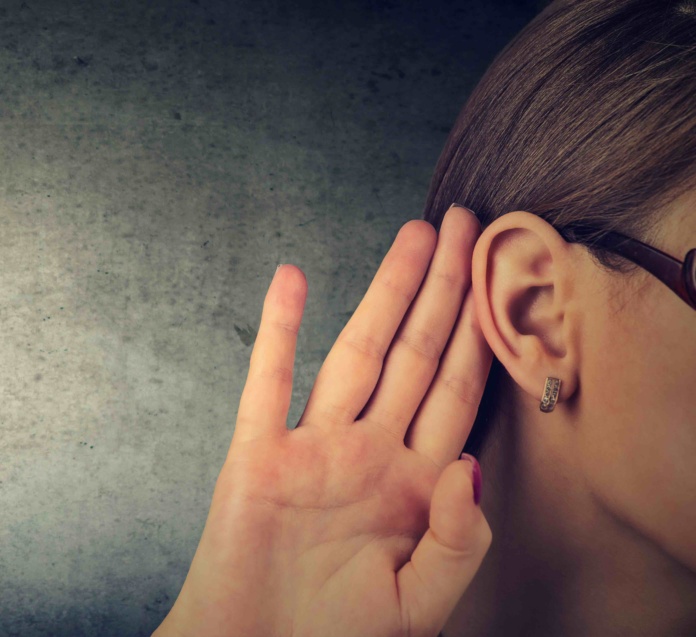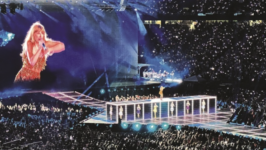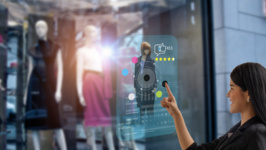Sara woke up at 6 AM, her headphones still on from the music playlist she fell asleep to. Groggy but determined, she queued up her exercise routine soundtrack as the first order of the day. Anna Calvi’s gritty vocals screamed “I don’t belong here…” from the speakers as Sara laced up her running shoes, the relentless beat driving her out the door before sunrise.

The morning ritual continued with a mindfully curated yoga playlist streaming through her headphones during her meditation practice. Sara’s every move was choreographed to the cadence of her personalised audio realm, a world she could control and inhabit entirely on her own terms.
Dressing quickly, headphones forever tethered, she skipped breakfast to ensure she caught the morning news broadcast on her preferred channel. At the office, Sara’s headphones remained a steadfast companion, allowing her to summon her “deep focus” playlist and mentally disengage from her surroundings before the workday began.
Lunchtime brought a seamless transaction – a meal ordered, delivered, and paid for online, consumed in solitary silence with her earbuds providing the only company. As the day drew to a close, Sara’s headphones guided her journey to the gym, her auditory refuge never faltering.
The cycle repeated itself day after day, week after week, with Sara’s existence becoming an intricate dance between her and the music, a choreography designed to minimise human interaction and maximise personal seclusion.
In those fleeting moments when she had to remove her headphones, an overwhelming sense of emptiness and isolation would wash over her, prompting an instinctive reach for her audio sanctuary once more.
The Pervasive use of headphones: A cautionary tale
The scene is all too familiar: a young person, headphones firmly planted, oblivious to their surroundings, lost in their own private soundscape. This behaviour, once considered a temporary escape, has become a way of life for many, raising concerns about the long-term implications for industries that thrive on human interaction, such as hospitality.
Sara, the fictional character depicted in the opening narrative, exemplifies this phenomenon. Her day is a seamless sequence of activities, meticulously choreographed to the beat of her curated playlists, with minimal human contact. From her morning exercise routine to her commute, workplace, gym, and even her home, Sara’s world is a hermetically sealed audio bubble, her headphones acting as a barrier against the intrusion of external stimuli.
The blurring lines of reality
This trend towards audio isolation is not merely a passing fad; it is symptomatic of a deeper shift in how we perceive and engage with reality. Andy Clark, a prominent philosopher and cognitive scientist, sheds light on this phenomenon through his groundbreaking work, “The Experience Machine.” Clark challenges the traditional view of cognition as a purely internal process, proposing instead that our cognitive abilities are intrinsically linked to the tools and technologies we use.
In the case of headphones, these unassuming devices have become extensions of our cognitive processes, shaping our perception of reality and influencing our behavior. As Clark postulates, our interactions with the external world are not passive but active and reciprocal. We shape our reality by engaging with our environment and using external tools to extend our cognitive abilities.
The lure of escapism
But what drives this desire for audio seclusion? The answer may lie in the concept of “escapism,” a construct that has garnered significant attention from researchers. Escapism, as defined by these scholars, is a compensatory consumption strategy where individuals distract themselves from self-discrepancy or unfulfilled needs by temporarily retreating into a more desirable reality. It is a form of avoidant coping, offering momentary relief but failing to address the root cause of distress.
In the context of youngsters and their headphone habits, escapism manifests as a desire to detach from the pressures and complexities of the real world, seeking solace in the virtual realms of music and audio entertainment. This escapist behaviour, while providing temporary respite, may inadvertently foster social anxiety, loneliness, and a diminished capacity for authentic human connection—qualities that are paramount in the hospitality industry.
The hospitality conundrum
For executives in the hospitality sector, this trend towards social deafness poses a significant challenge. How can an industry built upon the bedrock of human interaction and exceptional service thrive when its future workforce is conditioned to exist in a state of perpetual audio isolation?
The implications are far-reaching, from the difficulty in recruiting and retaining staff who possess the requisite interpersonal skills to the potential erosion of the guest experience, as socially disconnected employees struggle to connect with patrons on a meaningful level.
Addressing the challenge
To navigate this uncharted territory, hospitality leaders must adopt a multifaceted approach, one that acknowledges the complexities of the issue while actively seeking solutions.
First and foremost, there is a need for a deeper understanding of the underlying drivers of escapism among youngsters. By identifying the root causes of this behaviour, whether it be unfulfilled psychological needs, societal pressures, or other factors, hospitality organisations can develop targeted interventions and support systems to address these issues proactively.
Secondly, hospitality companies must reevaluate their recruitment and training strategies, placing a heightened emphasis on cultivating and nurturing interpersonal skills. This may involve incorporating immersive, hands-on training modules that simulate real-world guest interactions, encouraging employees to step out of their audio cocoons and engage with others in a meaningful way.
Furthermore, hospitality leaders should explore the potential of augmented and virtual reality technologies, not as escapist tools but as platforms for fostering empathy, emotional intelligence, and a deeper understanding of the human experience. By leveraging these technologies in a thoughtful and purposeful manner, hospitality organisations can bridge the gap between the virtual and the real, equipping their workforce with the skills necessary to thrive in a world that demands authentic human connection.
Conclusion
As the hospitality industry navigates the uncharted waters of social deafness, it is imperative to approach this challenge with a mindset of innovation and adaptability. By embracing the insights offered by thinkers like Andy Clark and researchers delving into the realms of escapism, hospitality leaders can develop strategies that not only address immediate concerns but also pave the way for a future workforce that is adept at navigating the ever-blurring lines between the virtual and the real.
Ultimately, the true essence of hospitality lies in our ability to forge genuine connections, to create experiences that transcend the physical and resonate on a deeply human level. It is through this unwavering commitment to human interaction that the hospitality industry will remain resilient, relevant, and indispensable in a world that seems increasingly disconnected.




















